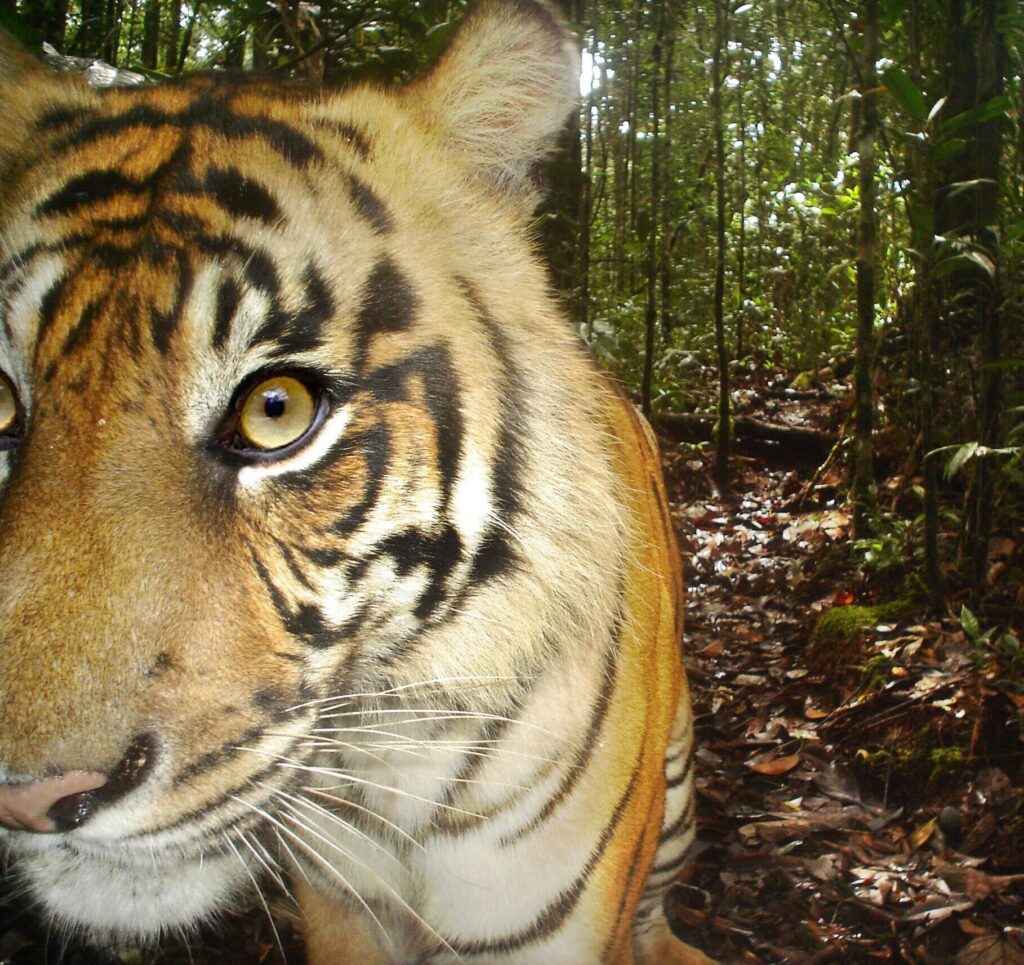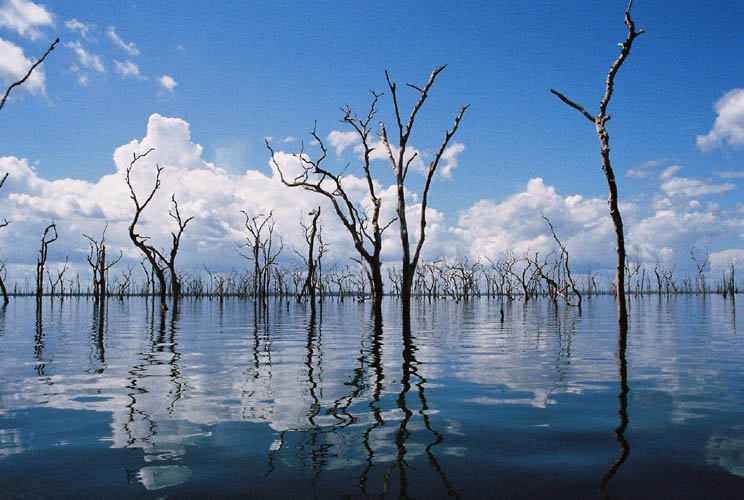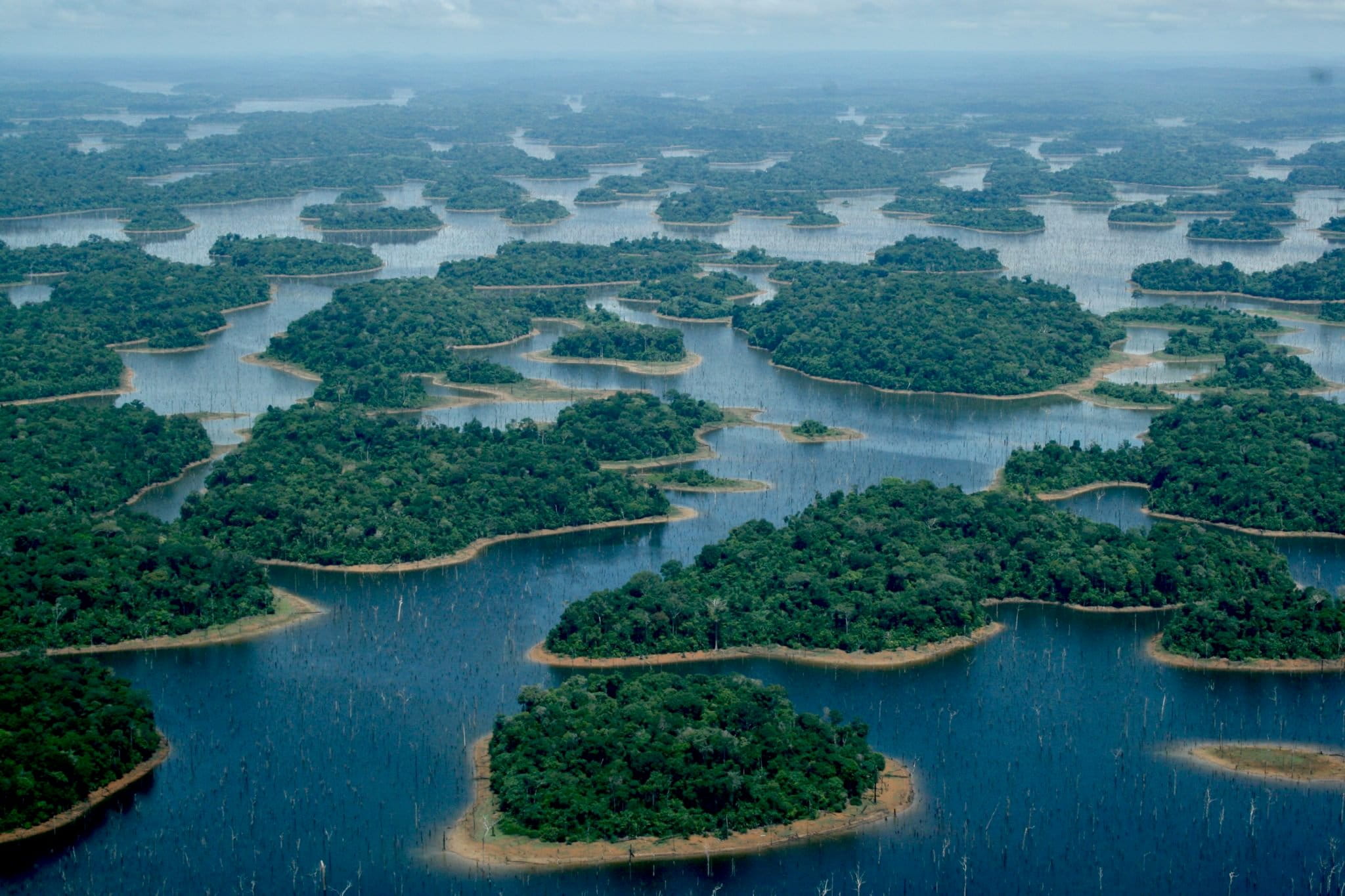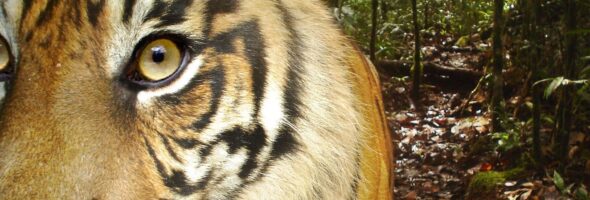
A new study shows that reservoirs in the wilderness fragment and destroy habitat for big cats. The same happens with apes, large migrating mammals and several other animal groups you would hardly associate with dams. And it is much worse when talking of freshwater dolphins, migratory fish (most fish migrates),waterfowl and dozens of other freshwater taxa… And if you think of indigenous cultures, many of those threatened by the same dams…

by Carolyn Cowan, Mongabay. Dec 10, 2021
- A new study reveals that more than one-fifth of the world’s tigers and one in 200 jaguars have been affected by habitat loss linked to hydropower projects.
- Land flooded for hydroelectric reservoirs has resulted in the substantial loss of habitat for both top predators, and future hydropower projects planned within the species’ ranges fail to consider the big cats’ long-term survival, the study says.
- Scientists struggle to track the fate of tigers and jaguars displaced by hydropower reservoirs, but their chances of survival are very low, according to the study’s authors.
- The researchers recommend that policymakers minimize the impacts of future hydropower projects by avoiding landscapes deemed high priority for conservation.
The flooding of land for hydroelectric dams has affected more than one-fifth of the world’s tigers (Panthera tigris) and one in two hundred jaguars (Panthera onca), according to the findings of a new study published Dec. 9 in the journal Communications Biology.
Seen by some as a low-carbon solution to global energy needs, large-scale hydropower projects are increasingly prevalent in the tropics, where untapped power potential overlaps with biodiverse landscapes. In recent years, scientists and Indigenous rights groups have criticized many such schemes for failing to fully consider impacts on biodiversity, freshwater connectivity and local communities.
The results of the new study highlight “just how significant the environmental impacts of hydropower can be,” Luke Gibson, a tropical biologist at the Southern University of Science and Technology in Shenzhen, China, and a co-author of the new study, told Mongabay in an email.
Gibson and his colleague, Ana Filipa Palmeirim, used published data on the population density and global distribution of tigers and jaguars to calculate the area of habitat lost and the number of individuals affected by existing and planned hydropower reservoirs.
They found that 13,750 square kilometers(5,300 square miles) of tiger habitat and 25,397 km2 (9,800 mi2) of jaguar habitat have been flooded to create hydroelectric reservoirs. A total of 729 tigers, or 20% of the global population, have been displaced by dams, whereas 915 jaguars, or 0.5% of the global population, have been affected.
“There is simply no science which shows what happens to tigers or jaguars when their habitats are flooded by hydropower reservoirs,” Gibson said. Displaced cats might attempt to survive in suboptimal, unoccupied habitat, or they might move into good quality but occupied habitat where they are likely to experience aggressive territorial encounters. In either scenario, according to Gibson, the chances of survival are very low.
The findings are bad news for the struggling big cats. Both species are suffering population declines due to habitat loss, poaching, shifting prey patterns and the effects of climate change.
Jaguars are listed as near threatened by the IUCN, having disappeared from half of their range between Patagonia and the U.S. Southwest over recent decades. Today, around 173,000 jaguars remain, nearly half of which live in Brazil.

Tigers face an even more precarious future. Although the IUCN lists the species as endangered, tigers have vanished from more than 93% of their historical range over the last century, with populations in Cambodia, Laos and Vietnam declared locally extinct in recent years. Overall, assessments estimate there to be as few as 3,200 tigers left in the wild.
Top predators are particularly vulnerable to direct habitat loss because they depend on large and contiguous habitats for their long-term survival — habitats that shrink when the land is submerged for power. And the impact of these projects is not limited to the footprint of the reservoirs. Access roads, construction routes and transmission lines further fragment and degrade surrounding habitats and open up once-remote habitats to hunting and resource extraction.
Tigers and jaguars “need large tracts of wilderness to find enough food, to find enough space to roam and rest, and to find other tigers and jaguars to mate with,” Gibson said. “Unfortunately, the remaining large undisturbed forest areas which are able to sustain these apex predators are also often the targets of hydropower development.”
The researchers’ analysis of future hydropower proposals indicated that 10 times the number of dams are planned within jaguar habitat compared to tiger habitat.
More than 300 of these future hydropower schemes are in Brazil. They will typically inundate flat, lowland forest, resulting in the loss of an increasingly large number of jaguars for every megawatt generated. In fact, Brazil’s plans alone would nearly double the number of affected jaguars, according to the study.
Although fewer dams are planned in Asia, hydropower proposals in the region do not consider the long-term survival of tigers, according to the study. Most planned dams overlap with priority tiger landscapes, protected areas and forest complexes in locations such as Bhutan, Nepal and the Leuser Ecosystem in Sumatra, Indonesia.
According to the study, such future projects have the potential to “derail” the 2010 St. Petersburg Declaration on Tiger Conservation, in which government ministers from the 13 countries that still had wild tiger populations at the time committed to implementing measures to double wild populations by 2022.
The drive by many policymakers to commit to green energy expansion regardless of the costs underlies poor decision-making, Gibson said. “A good example is Brazil, which derives around 70% of its electricity from hydropower. Some recent research has suggested that future droughts in this region will decrease the electricity output from existing dams, so, as crazy as it may sound, one policy to combat this might be to build more dams.
“I think we have to accept that new hydropower projects will continue to be built around the world,” Gibson said, “but what we should strive for is to minimize their impacts on the environment — in this case by avoiding topographically flat areas which would cause extensive habitat loss and priority conservation landscapes for these species.”
Citation:
Palmeirim, A. F. & Gibson, L. (2021). Impacts of hydropower on the habitat of jaguars and tigers. Communications Biology, 4, 1358. doi:10.1038/s42003-021-02878-5
Source: Mongabay


